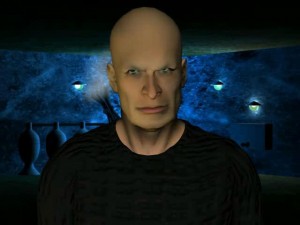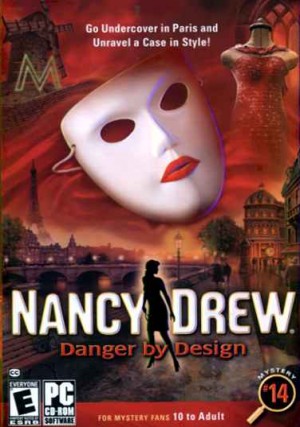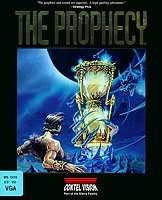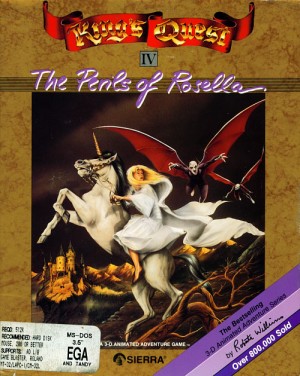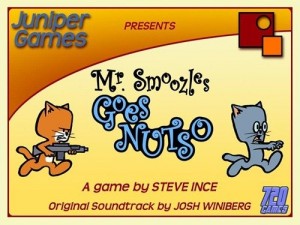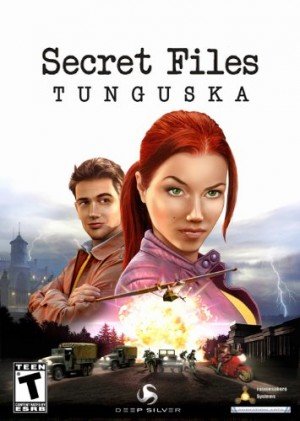Review for Professor Layton and the Unwound Future
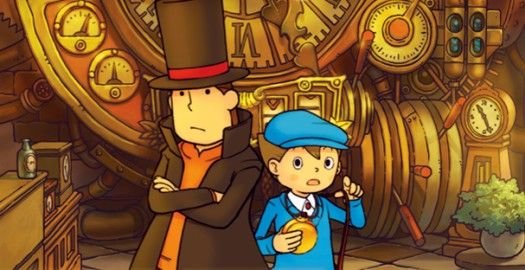
Game information
Adventure Gamers Awards
With Professor Layton and the Unwound Future (or Lost Future in Europe) being the third in a series of so-far really, really good Nintendo DS puzzle-adventures, I was strongly hoping for further greatness as Level-5 continues to refine its winning formula. And indeed, the charming aesthetic remains intact, and there are even more new puzzles (over 165) to solve, plus some minor (purely mechanical) improvements here and there. Unfortunately, the game seems to suffer from subtraction by addition this time around, removing at least a little of its predecessors’ pure, sweet puzzly goodness in the process.
See, Professor Layton games are a bit like drinking a nice, warm cup of tea. They’re comfort games. No matter how life-threatening situations get in the game, the protagonists—Layton himself and his assistant Luke—seem so relaxed about it all, so pleasantly contemplative, it’s hard not to take a cue from them when playing. So when a sequel means bringing in more outrageous plot details and more characters, I can’t help thinking: what’s the rush? Jam-packing the adventure just doesn’t feel very… y’know, “Laytonesque”; quantity over quality doesn’t seem so “gentlemanly”. Of course, it is still Layton, so you can once again expect a whimsical, quirky puzzle game with abundant brainteasers. It’s still adorable, and absolutely worth your time, just a little less than before.
Starting with an explosive time machine demonstration, a missing Prime Minister of England, and a letter that’s apparently from ten years in the future, Layton and Luke set out to a clock shop to begin puzzling their way through time travel, mad scientists, and lost loves, all in the hope of saving London from impending doom. The duo will mostly be exploring the city, this time hitting some landmarks like the river Thames and Chinatown. There are plenty of plot-twists along the way—though many of them you’ll see coming—and loads of people to meet, including future versions of the heroes themselves. It all sounds intriguing, but really about halfway in it’s become a bit too over-the-top to be engaging. Rehashed characters from earlier games (like the underdeveloped arch-nemesis Don Paolo) feel sort of thrown in, and the dialogue is very brief and superficial. The various characters look like they’d be overflowing with personality if only you’d get the chance to know them, but you never really do. Aside from a surprisingly meaningful, emotional ending (Layton has a heart, folks), the story is mostly just light entertainment—a means to a puzzle.
But that’s okay! After all, the game still has its unique European-cartoon feel (with even more great cutscenes this time around), and the music, sound effects, and overall design haven’t changed much since the last game, which is absolutely fine, as the presentation has always been fantastic. The core gameplay remains very similar as well, still consisting of tapping your stylus in the main environments to find interactive items and hint coins scattered throughout them. You’ll use this same method to talk to characters periodically and discover puzzles to solve. Like before, they’re all logic puzzles, from word problems (“which of these four people is lying?”) to sliding puzzles; some are maze-like, some involve making shapes out of others, while others are deceptive outside-the-box thinking challenges. Even if you think you’re up against a math problem, in a Layton game you’ll use abstract thinking to find a subtle clue in the problem itself, making all those numbers a moot point.
Returning players will find the puzzles work essentially the same way as always. Interaction happens on the lower touch screen with rules and info on the screen above, only now you have more options with the “memo” function for notes and diagrams. In earlier games it simply created an overlay on top of the puzzle, but now you can choose different line widths to draw or write with on the overlay, and varied color options makes it much easier to sort out the nuances in a tricky puzzle. And where before you could use coins you’d found to buy three hints for each puzzle, there’s now an additional option to buy “super hints,” costing two coins each—perfect for when you want the game to practically give you the answer and be done with it.
The problem is, I didn’t find myself using these features much, as the puzzles are significantly easier in Unwound Future than in the last two titles. They do ramp up in difficulty for the final stretch (not to mention the insanely hard bonus downloadable puzzles), but for the most part they’re easy and extremely similar to one another. A large majority are multiple-choice word problems, and the wrong answers can typically be weeded out within seconds. A few others require simply turning a number upside down, or looking at something from a different angle to find the answer. I also encountered a handful of find-the-exit puzzles that I accidentally solved with a little tinkering and no strategizing whatsoever. 165 puzzles is an impressive number, but I’d rather have a better balance with at least a select few that really work my brain. Then again, solving puzzles with minimal mistakes earns you more of the game’s currency, which in the end will reward you with artwork from the game, movies, and character profiles.
There’s also the ongoing issue of puzzles not really being integrated with the storyline. Normally you find puzzles by tapping on objects or characters on the street, who then initiate a puzzle as a challenge (apparently bored from so much loitering). Key moments do incorporate a puzzle, usually involving doors with a “puzzle lock”, but most of the time they’re completely contrived. Here’s an exact conversation between Professor Layton and Luke in an alley in London:“Look at these stairs! Boy, all this talk about stairs reminds me of a puzzle!” This is nothing new for the series, of course, but it’s glaring nonetheless.
Getting around is easy-breezy as always, as simple as clicking on a shoe to bring up large, obvious exit arrows leading to the next screen. While exploring, the top screen gives a more general overview of your location in London, but you can never zip directly to other locations. Backtracking is a little much this time around, but it never takes more than a minute to reach an old area. Besides, this game’s all about taking it easy and discovering any puzzles and hint coins you may have missed along the way.
After playing for a while, you’ll unlock three wonderful minigames to keep you busy as well. They’re cute and childish in appearance, yet challenging enough to never become a bore. Clicking on Layton’s trunk in the corner of the screen, you can access a toy car game, where you have to strategically place limited directional arrows to reach the goal. Another task contains a series of children’s books to place stickers in to create a story, and the third has you making ropes to help a parrot deliver a package by jumping rope-to-rope to reach its destination. They’re all surprisingly rewarding, and the parrot minigame is the most difficult one in the series yet. If you complete these minigames, you get access to even more puzzles—much, much harder ones than most (if not all) offered in the main storyline.
When Professor Layton and the Curious Village arrived on the scene in 2008, there was something heartwarming about its aesthetic, its crafty story, and its great puzzles. The second game, The Diabolical Box / Pandora’s Box, improved on its predecessor’s mechanics but took a step back in gameplay integration and the series lost a bit of its heart. This time around, The Unwound / Lost Future is still an entirely worthwhile puzzler for 12 to who-knows-how-many hours of your time, depending on how many extra puzzles and minigames you decide to tackle, but the “more is better” approach isn’t helping. If the puzzles and story suffer in the process, no amount of added mechanics and bonuses are going to fully shine. But hey, it’s still a solid entry in a great series, with plenty of polish and charm, and it has a fantastic ending. It may not be quite as good as the others, but it’s still required gaming for the Layton-obsessed, and a high recommendation for anyone who loves puzzles. Or tea.








